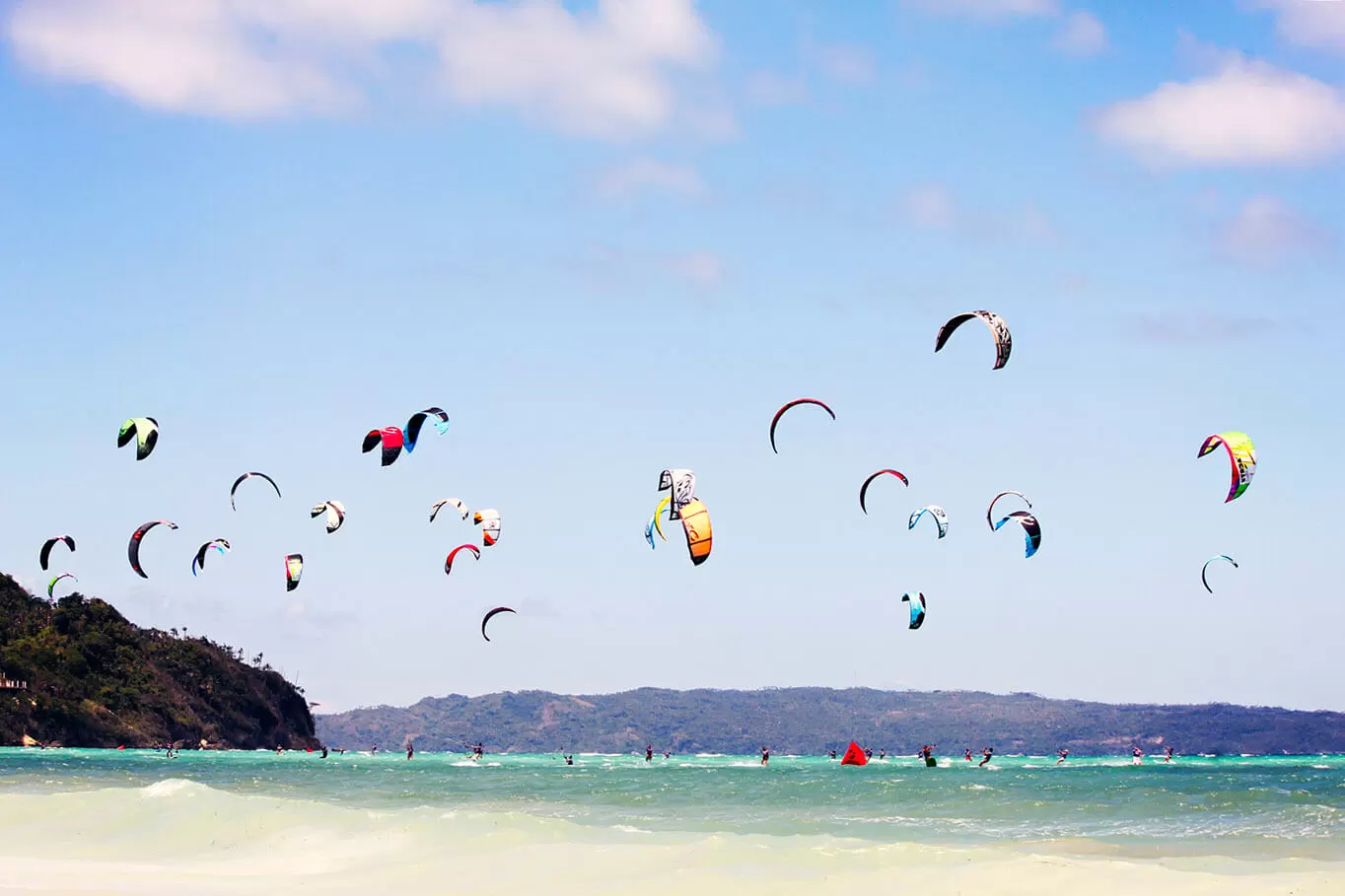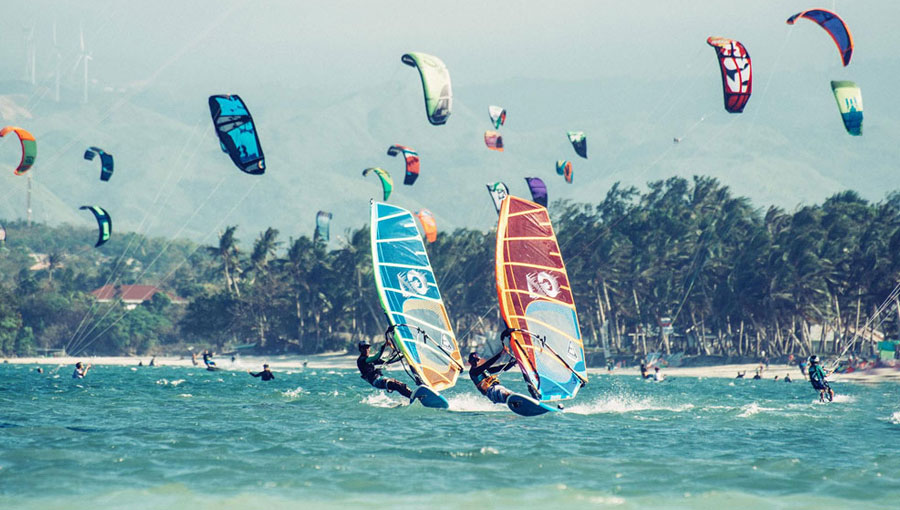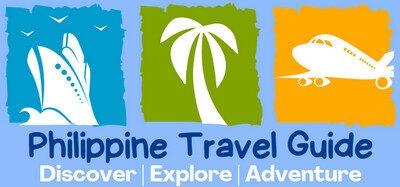Boracay, a postcard-perfect island paradise in the Philippines, beckons travelers with its pristine beaches, vibrant nightlife, and turquoise waters. But for thrill-seekers yearning for an adrenaline rush, Boracay offers an exhilarating adventure: kitesurfing. Often referred to as “kiteboarding,” Boracay kitesurfing allows you to harness the power of the wind and carve across the water’s surface, creating an unforgettable experience.
This article delves into the world of Boracay kitesurfing, exploring the ideal season, the difference between kitesurfing and windsurfing, rates and pricing to expect, and the best spots on the island to catch some wind and waves.
When to Experience Boracay Kitesurfing
Understanding the island’s wind patterns is key to a successful Boracay kitesurfing adventure. The prime season for Boracay kitesurfing coincides with the Amihan season, which stretches from November to April. During this period, consistent northeasterly winds, ranging from 15 to 25 knots, create ideal conditions for both beginners and seasoned kiteboarders. While wind speeds can occasionally exceed 30 knots, these periods are generally best suited for experienced riders.

The months between May and October experience a shift in wind patterns, making kitesurfing less predictable and potentially challenging. However, for experienced kitesurfers seeking a challenge, these off-season months can offer thrilling rides with stronger winds.
Kitesurfing vs. Windsurfing: Understanding the Difference
While kitesurfing and windsurfing involve harnessing the wind to propel yourself across the water, their setup and technique differ. Windsurfing utilizes a single large sail mounted on a board, which the rider controls with a boom. In contrast, kitesurfing employs a large inflatable kite that the rider controls with a bar and lines. The kite generates lift, pulling the rider across the water on a smaller board with foot straps.

Due to its simpler setup, windsurfing might offer a slightly easier learning curve for beginners. However, once mastered, kitesurfing offers a more dynamic and exhilarating experience. Ultimately, the choice between the two activities depends on personal preference and comfort level.
Rates and Pricing for Boracay Kitesurfing
Several factors influence the cost of your Boracay kitesurfing experience. Here’s a breakdown of the main considerations:
-
Lessons: Taking lessons from a reputable kitesurfing school is highly recommended for safety and optimal learning. Beginner lessons typically range from ₱18,000 to ₱25,000 (around $340 to $470), lasting for several hours and covering the basics of kite control, water relaunch techniques, and safety procedures.
-
Equipment Rental: Kitesurfing schools often offer equipment rental packages alongside lessons. Expect to pay around ₱1,500 to ₱2,000 (around $28 to $38) per day for a complete setup, including a kite, board, bar, harness, and safety equipment.
-
Independent Riding: Experienced riders who choose to kitesurf independently can rent equipment from various shops in Boracay. Rates vary depending on the shop and the quality of equipment, but typically range from ₱1,000 to ₱2,500 (around $19 to $47) per day.
Boracay’s Kitesurfing Havens: Where to Ride the Waves
While Bulabog Beach reigns supreme for Boracay kitesurfing due to its ideal learner-friendly conditions, the island offers a few other options for experienced riders seeking a challenge or a change of scenery. Here’s a closer look at some alternative kitesurfing spots in Boracay:
-
Punta Blanca: Nestled at the northernmost tip of Boracay, Punta Blanca is a secluded beach known for its consistent side-onshore winds and challenging waves. This remote location attracts experienced riders seeking an adrenaline rush. The stronger winds and lack of a dedicated kitesurfing school necessitate advanced skills and self-reliance. Be aware of currents and potential hazards before venturing out to Punta Blanca.
-
Crocodile Island: A short boat ride from Boracay’s shores lies Crocodile Island, a tiny islet famous for its unique rock formations resembling a crocodile’s snout. This location boasts powerful winds and formidable waves, making it suitable only for highly skilled and experienced kitesurfers. The strong currents and remote setting demand a thorough understanding of safety protocols and self-rescue techniques before attempting to kitesurf here.
-
Ilig-Iligan Beach: Located on the western coast of Boracay, Ilig-Iligan Beach offers a unique kitesurfing experience. While not as popular for kitesurfing as Bulabog Beach, this beach can be a viable option during the Amihan season (November to April) when consistent off-shore winds prevail. However, due to the off-shore wind direction and lack of a dedicated kitesurfing infrastructure, Ilig-Iligan Beach is best suited for experienced riders who are comfortable with downwind riding and self-rescue techniques.
Important Note: Regardless of your chosen kitesurfing spot in Boracay, always prioritize safety. Research the specific location, be aware of wind conditions, currents, and potential hazards. If venturing outside Bulabog Beach, ensure you possess the necessary skills and experience for the stronger winds and potentially challenging conditions.
Lessons, Gear, and Progression in Boracay Kitesurfing
Building on the foundation of safety, let’s delve deeper into the exciting world of Boracay kitesurfing. Here, we’ll explore the learning process, the essential gear, and the path toward progression.
Learning the Ropes: Kitesurfing Lessons and Progression
Taking lessons from a certified instructor at a reputable kitesurfing school in Boracay is paramount. A qualified instructor will guide you through the proper techniques, safety procedures, and ensure you progress at a safe and manageable pace. Most schools offer beginner, intermediate, and advanced lessons, catering to all skill levels.
-
Beginner Lessons: Expect to spend your initial lessons focusing on kite control on land to build muscle memory and confidence. You’ll then progress to practicing water relaunch techniques, where you learn to safely relaunch the kite after falling into the water. The final stages of beginner lessons might involve body dragging – being pulled across the water by the kite while lying down on the board – to get accustomed to the feeling of being powered by the wind.
-
Intermediate Lessons: Intermediate lessons build upon the foundation established in the beginner stage. You’ll focus on refining your kite control skills, practicing upwind riding—the ability to ride against the wind direction—and potentially attempting your first water starts, where you stand up on the board while being powered by the kite.
-
Advanced Lessons: Advanced lessons delve deeper into technical maneuvers, jumping techniques, and wave riding. Experienced instructors can also help you refine your riding style and perfect your technique.
Gearing Up for Success: Essential Kitesurfing Equipment
Kitesurfing requires specific equipment to ensure safety and optimal performance. Here’s a breakdown of the essentials:
-
Kite: The heart of your kitesurfing setup, the kite generates the power that propels you across the water. Sizes vary depending on wind strength and rider weight. Beginners typically start with larger kites for better control in lighter winds.
-
Board: Kitesurfing boards are smaller than surfboards and designed for speed and maneuverability. Different board types cater to various skill levels and riding styles. Beginners typically use larger, more stable boards, while experienced riders might opt for smaller, more responsive boards for performing tricks.
-
Bar and Lines: The bar connects you to the kite and allows you to control its direction. Lines connect the bar to the kite itself. Both the bar and lines require proper maintenance for safety reasons.
-
Harness: The harness distributes the kite’s pull across your body, allowing for more comfortable and efficient riding.
-
Safety Equipment: A helmet, impact vest, and leash are crucial safety equipment. The helmet protects your head in case of a fall, the impact vest provides buoyancy and helps prevent injuries, and the leash connects you to the board to prevent it from drifting away if you lose control of the kite.
The Path to Progression: Continuous Learning and Practice
The beauty of kitesurfing lies in the continuous learning curve. With each session, you refine your skills, build confidence, and unlock new possibilities on the water. Here are some tips to accelerate your progression:
-
Practice Regularly: Consistent practice is key to mastering the art of kitesurfing. Aim for frequent sessions, even if they are short, to solidify your skills and muscle memory.
-
Seek Feedback: Don’t hesitate to ask your instructors for feedback and guidance. Their expertise can help you identify areas for improvement and accelerate your learning.
-
Watch Tutorials and Kitesurfing Videos: Visual learning can be immensely helpful. Watching professional kitesurfers and instructional videos can provide inspiration and insight into advanced techniques.
-
Join the Kitesurfing Community: Connect with other kitesurfers in Boracay. Sharing experiences and tips with fellow enthusiasts can foster a sense of camaraderie and support on your kitesurfing journey.
Conclusion: Riding the Wind in Paradise
Boracay kitesurfing offers an exhilarating experience, combining the thrill of harnessing the wind’s power with the beauty of a tropical paradise. By understanding the seasonality, the distinction between kitesurfing and windsurfing, rates and equipment considerations, and prioritizing safety through lessons and proper gear, you’re well on your way to carving your path across the turquoise waters of Boracay. Remember, consistent practice, continuous learning, and embracing the kitesurfing community will propel you toward mastery, allowing you to truly experience the magic of riding the wind in this island paradise.
See Also:
- Understanding the Difference Between Cebu and Cebu City
- Is Cebu Dangerous for Expats? A Look at Safety in the Queen City of the South
- Planning Your Paradise Escape: Philippine Travel Entry Requirements
- When is the Worst Time to Visit the Philippines
- When is the Best Time to Visit the Philippines
